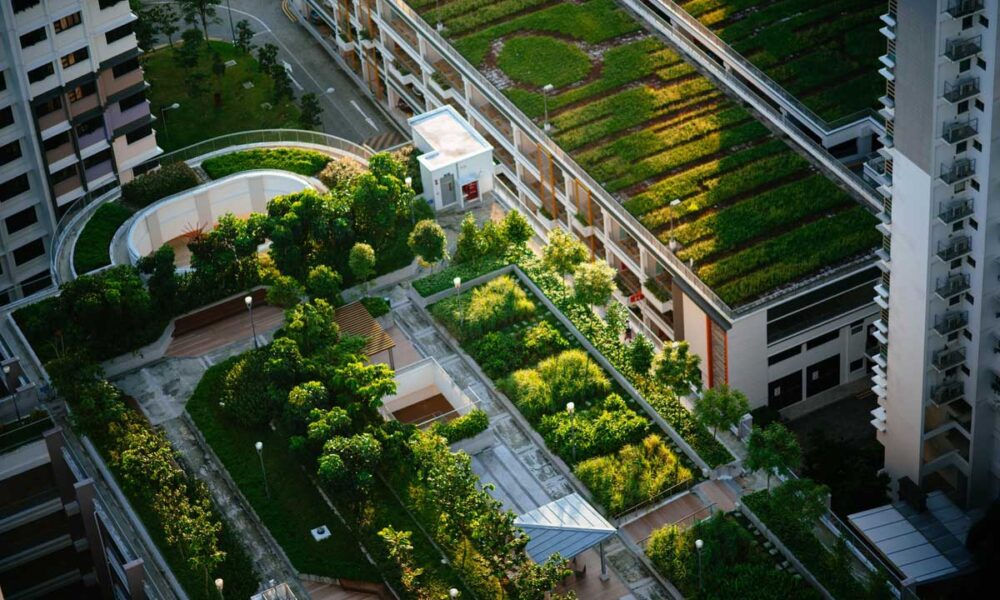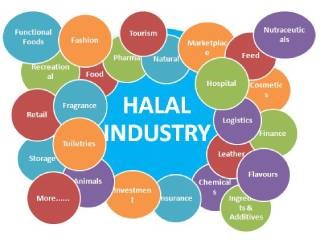UNCATEGORIZED
China’s progress: From the Moon to Mars and Earth science issues
Published
2 years agoon
By
Editor
Technological innovation is like a huge engine, which is driving this half decade to expand the depth and breadth of time and space. Going to Mars to explore a new frontier, as well as bringing minerals from the Moon, are daunting tasks that await us in the short term. The development needs of human society are understood and hope is sown of even exploring the possibility of civilisations far away from us in the Universe.
In 1992, the People’s Republic of China established a three-stage strategy for the engineering of manned space flight, for which the construction of a space station was an important goal. Twenty-nine years later, on April 29, 2021, the Tianhe core module of the Chinese Space Station was successfully launched, thus marking the full success of orbital assembly and space station construction.
Tianhe is the core module that was the first one launched for the Tiangong space station. It was placed in orbit on the aforementioned date as the initial launch of the final phase of the programme by the China Manned Space Agency.
In 2021 six astronauts went to the space station. On June 17 the crew of Shenzhou 12, namely Nie Haisheng, Liu Boming and Tang Hongbo, left for the space station. On October 16, Zhai Zhigang, Wang Yaping and Ye Guangfu, from Shenzhou 13, became the second group of residents at Tiangong.
The fact of being in one’s own space station does not only mean to look up and admire the beauty of creation, but also to meditate on mankind’s future destiny.
On May 15, 2021, China’s first Mars exploration mission, namely the Tianwen-1 probe, successfully landed in the southern part of Utopia Planitia. After the news was confirmed, Zhang Rongqiao (chief designer of the mission’s project), Sun Zezhou (chief designer of the Tianwen-1 survey system), and He Rongwei (commander-in-chief of the survey system), hugged and were moved to tears along with the vast majority of the ground staff.
People on Earth have always been looking for new solutions to try to survive. Some people believe that sooner or later we will emigrate to space. As a planet with many similarities to Earth, mankind has high hopes for Mars.
Is Mars really the future of Earth? We need to go there to find out.
Mars, however, is very far away. Tianwen-1 travelled along the Hohmann orbit in the vast and deep space and it took more than seven months for the probe to reach Mars orbit. Furthermore, a Mars probe must be able to handle and manage itself, as it loses contact with the Earth for about seven minutes during the process of leaving orbit and landing, and can only “land blindly”, i.e. with special evaluation software. This is also the key to the success or failure of exploration missions to that planet. Most of the Mars probes previously launched by countries have failed there.
On December 16, 2020, the Chang’e-5 probe successfully returned from the Moon. Thanks to the samples collected and findings, Chinese scientists have solved part of the mystery of Moon’s life. On October 19, 2021, the Institute of Geology and Geophysics of the Chinese Academy of Sciences and the National Astronomical Observatory of that Academy, together with many research institutes, drafted academic articles on related research, which were published in the prestigious international journal “Nature”. The study found that the Moon’s magma activity had continued until about two billion years ago, meaning that the Moon’s lifespan was extended by about 800 million years longer than previously estimated. This conclusion bridges the gap in human understanding of the evolutionary history of Moon’s years. The research object of this success is a small amount of blackish dust that appears inconspicuous. That pinch of lunar soil was not easy to find.
The Chang’e Moon exploration project was launched in 2004 and is divided into three phases: head to, land and return. In 2020 Chang’e-5 – a robotic Moon exploration mission that started on November 23 – landed on December 1 near Mons Rümker, in the north-west of Oceanus Procellarum (Ocean of Storms). It completed its first celestial body recovery mission by retrieving one kilogram and 731 grams of lunar soil. In the end, Chinese scientists lived up to expectations and provided mankind with a little more insight into the evolution of the universe.
With regard to the ongoing successes of Chinese science, it is worth noting the significance of the opening of the 20th Conference of the Chinese Academy of Sciences, the 15th Conference of the Chinese Academy of Engineering and the 10th National Congress of the Chinese Science and Technology Association in Beijing on May 28, 2021.
General Secretary Xi Jinping delivered a fundamental speech at the opening session, in which he emphasised that China’s broadest scientific and technological players should take on the heavy responsibility entrusted by the times and strive to achieve a high level of scientific and technological self-reliance, mutual trust and self-improvement.
The Fifth Plenary Session of the Nineteenth Central Committee of the Communist Party of China (CPC), convened earlier, had proposed to commit to scientific and technological self-reliance as a strategic support for national development.
Technological innovation has currently become the main battleground of international scenarios, and the competition around the top leadership of science and technology is unprecedented. The aim of the Conferences was to achieve a higher level of quality.
The Conferences outlined specific requirements on five aspects: 1. strengthening originality; 2. enhancing the national strategic scientific and technological strength; 3. promoting the reform of the scientific and technological system; 4. building an ecology of innovation; 5. stimulating the innovative vitality of various talents.
Science and technology research should adhere to the orientation of the problem and focus on the most pressing issues, while scientists should not waste time on ceremonial activities and welcome and reception events, as there are people entrusted to do so, and should avoid other events that cause major repercussions in the technological and scientific community.
At the same time, further progress needs to be made in the key technologies of oil and natural gas; basic raw materials; industrial software; seeds; methods to improve the performance of tools and equipment for scientific tests, chemical preparations, etc. Therefore, a clear statement of intent was therefore sent to people in science and technology circles inside and outside these conferences.
It is worth remembering that strengthening basic research is an inevitable requirement for technological improvement. If progress is to be made in the above areas, the spirit of “sharpening a sword in ten years” is essential. The 2020 National Science and Technology Awards announced in November 2021 show that the average research time of the winning projects is 11.9 years, of which almost 40 per cent is 10-15 years.
Last year a clear call was made for the People’s Republic of China to march towards the goals of its second centenary. If science and technology are established as primary goals, the country will be more stable, and if science and technology are strong, the State will be strong.
This means that today, both at the Ministry of Science and Technology and the National Natural Science Foundation of China (an organisation directly affiliated to the State Council) and at other departments, we do not always find an excellent conduct record. This is because meritocracy in supervision in the field of science and technology is becoming increasingly selective and academic misconduct is regularly subjected to severe criticism.
The 2021 National Science and Technology Work Conference held earlier this year conveyed a message to strengthen the construction of the work and study style for more supervision. During the meeting, Wang Zhigang, Minister of Science and Technology, proposed to build a large-scale supervision model and have zero tolerance for those who do not behave properly and constructively.
In August 2021, the Ministry of Science and Technology, together with the member units of the Joint Conference on Building Integrity in Scientific Research, established a reporting mechanism for cases of unworthy behaviour and publicly notified the results of the investigation.
Besides the intuitive feeling that the frequency of notifications has increased significantly, the intensity of investigations and sanctions is also impressive. For example, in the investigation and handling of the results of some medical research integrity investigations, made by some educational and medical institutions and issued by the Ministry of Science and Technology on December 17, 2021, some people had their PhDs revoked. Some were removed from teaching positions, while others, including associate professors, head physicians and other professionals, were dismissed. Other citizens were dismissed as a result of the cancellation of their postgraduate tutor qualifications.
The academic circles are the subject of hot debates and the investigation and sanctioning of academic misconduct are real.
Indeed, the notification is meant to serve as a warning, so as to lead most scientific researchers to consciously adhere to the basic policy line of integrity and abide by academic and research ethics, as well as practice proper academic standards. At the same time, it is noted that there is still a long way to go to correct academic negligence. In view of maintaining high quality standards for academics and the scholars’ original dignity, concerted efforts of the academic community are needed so that credibility remains intact and results are high.
The integrity of scientific research is the cornerstone of scientific and technological innovation. Without sufficient integrity, innovation becomes impossible and research suffers scientifically, as it is a work of conscience.
As a Chinese saying goes, “The money you spend on soy sauce can be used to make vinegar”. It means that it is particularly necessary for scientific research work not to rely on instant inspiration, random approach, chance and uncertainty of the pathway to follow.
More benefits for researchers are also needed to stimulate innovation. Since the 18th Chinese Communist Party Congress, the Central Committee and the State Council have issued a series of measures to optimise the management of scientific research funds. These are policy documents and reform measures. In terms of managing scientific research funding, however, there are still problems such as inadequate implementation of policies; strict management of project funding; imperfect funding mechanism; low percentage of indirect costs, and difficulty in repaying funding.
Further documents (“Various Opinions on Reforming and Improving the Management of Central Financial Research Funds”), issued in August 2021, provided an unprecedented institutional guarantee for solving these problems.
In response to the reflection “whether money for the purchase of soy sauce can be used to make vinegar”, the “Various Opinions” suggested to streamline and simplify budget preparation. In addition to the cost of equipment, e.g. over 500,000 yuan, other costs only envisage basic calculation instructions and no details are required. This means decentralising the budget adjustment power – i.e. all the equipment cost is delegated to the project enterprise unit, and all the other cost adjustment rights, with the exception of the equipment cost, are delegated to the project leader by the project enterprise unit. The scope of implementation of the budget contract system is also extended for talents and foundations. Research projects are no longer subject to project budgets.
In response to problems such as insufficient incentives for scientific researchers, the “Various Opinions” propose to increase the share of indirect costs and the project enterprise unit may use all indirect costs for performance expenses and favour teams and individuals with outstanding innovative performance. According to the specific share suggested in the paper, some researchers estimate that in the future “the cost of ‘people’ in scientific research project funds may exceed 50 per cent”.
These steps have been made necessary because, with the “slackening” that has been going on over the past few years, it has been easy for some scientific researchers to go off on their own with their dreams, i.e. to go into battle lightly. This has meant that less progress has been made on the road to building a powerful country in the field of science and technology.
If we want to take the road to Mars, we must first know China’s roads.
Related
You may like
-


WEF and UN-Habitat Join Forces to Unlock Critical Investment in Cities through Public-Private Collaboration
-


5 ways countries can adapt to the climate crisis
-


The Development of Artificial Intelligence in China: Conclusions
-


Four ways the planetary crisis is impacting mental health
-


New European Bauhaus under Cohesion Policy: €50 million call for innovative projects in cities
-


The Development of Artificial Intelligence in China: Investment and attention to production
UNCATEGORIZED
7 Trends Reshaping a USD 3.9 Trillion Global Halal Industry
Published
4 months agoon
January 2, 2024By
Editor
The Global Halal Market (GHM) is not just growing, it’s exploding. Driven by a surging Muslim population, rising disposable incomes, and shifting consumer preferences, this behemoth is projected to reach a staggering USD 3.9 trillion by 2027. But what’s driving this explosive growth? Buckle up, because 2024 promises a thrilling ride fueled by cutting-edge technology, ethical consumerism, and personalized convenience. Here’s your deep dive into the 7 hottest trends reshaping the global halal landscape:
Halal Tech Revolution: Where Silicon Valley Meets Mecca
Forget clunky processes and opaque sourcing. The halal industry is getting a tech makeover, and it’s about time. Blockchain is ensuring ethical sourcing and transparent supply chains, from farm to fork. Imagine halal meat traced back to its free-range roots, with every step documented on a tamper-proof digital ledger. Artificial intelligence is optimizing slaughterhouses, automating processes, and ensuring humane treatment of animals. Halal e-commerce platforms are booming, bringing convenience and halal-certified products to Muslim consumers worldwide. Think Amazon, but with prayer apps, virtual tours of halal farms, and even halal-compliant fintech solutions – the future of halal is digital and delicious!
Ethical Halal: Beyond Compliance, Embracing Values
Muslim consumers are no longer satisfied with just a halal label. They crave sustainability, animal welfare, and organic goodness. Expect a surge in plant-based halal options, from juicy burgers to creamy milkshakes made with innovative pea protein and lentil blends. Ethically sourced meat, raised on antibiotic-free feed and roaming in spacious pastures, will be the new gold standard. And get ready for a beauty revolution: cruelty-free cosmetics and hygiene products that adhere to Islamic principles will pamper consumers with peace of mind.
Convenience is King: Busy Lives, Halal Solutions
In today’s fast-paced world, convenience reigns supreme. The halal industry is taking note, with solutions tailor-made for busy Muslim lives. Subscription meal kits will deliver pre-portioned, halal-certified ingredients straight to doorsteps, complete with recipe cards for stress-free meal prep. Halal food delivery apps will take the guesswork out of dining out, connecting users with a curated selection of restaurants and cafes offering delicious and compliant meals. And for those special occasions, on-demand halal catering will ensure stress-free gatherings, leaving hosts free to enjoy the festivities.
Beyond Food: The Halal Universe Expands
The halal industry is shedding its “food-only” label and branching out into exciting new frontiers. Halal travel is booming, with destinations vying for Muslim tourists by offering halal amenities, prayer spaces, and culturally sensitive experiences. Imagine exploring Marrakech’s vibrant souks or unwinding on a pristine Maldives beach, all while knowing your needs are catered to. Halal cosmetics are gaining traction, with innovative brands formulating products free of alcohol, animal derivatives, and harsh chemicals. And even the pharmaceutical industry is taking notice, developing halal-compliant medications and healthcare products that align with Islamic principles.
Science & Innovation: Reimagining Halal with Cutting-Edge Tech
Research labs are not just churning out papers; they’re cooking up a futuristic halal feast. Lab-grown halal meat is no longer science fiction, with companies like Eat Just and Aleph Farms creating meat indistinguishable from its conventional counterpart, but without the ethical and environmental concerns. Plant-based alternatives are evolving beyond bland tofu, with innovative textures and flavors mimicking everything from juicy steaks to succulent lamb shanks. Get ready for halal food reimagined with cutting-edge technology, offering delicious and sustainable options for the future.
Health & Wellness: Halal Goes Holistic
Muslim consumers are prioritizing their well-being like never before. Enter functional halal foods infused with ingredients like probiotics, antioxidants, and adaptogens, designed to nourish the body and mind. Sports nutrition is another burgeoning market, with protein powders and energy bars formulated specifically for Muslim athletes seeking halal-compliant performance boosters. And for those managing chronic conditions, dietary supplements tailored to diabetes management, weight loss, or heart health will offer halal solutions for holistic well-being.
Storytelling & Branding: Building Trust, Shaping Perceptions
In a crowded marketplace, differentiating your brand is key. The halal industry is catching on, embracing compelling narratives and values-driven branding. Showcase your commitment to ethical sourcing, sustainability, and community engagement. Share inspiring stories of the farmers who raise your halal meat, the scientists developing innovative food technologies, or the communities you empower through your business practices. By building trust and aligning with consumer values, halal brands can stand out.
Embrace the Halal Revolution:2024 is not just a year on the calendar; it’s the dawn of a new era for the halal industry. By harnessing the power of technology, embracing ethical values, and catering to evolving consumer needs, halal businesses can tap into a USD 3.9 trillion market brimming with potential. So, whether you’re a food producer, travel blogger, or tech whiz, join the halal revolution. Optimize your offerings, tell your story, and connect with Muslim consumers worldwide. The future of halal is bright, and the time to act is now.
HALAL ECONOMY
Beyond Andalusia: Exploring Spain’s Islamic Heritage through Halal Tourism
Published
5 months agoon
December 24, 2023By
Editor
Spain’s evolving landscape of Muslim-friendly tourism is a testament to its rich Islamic history and its commitment to embracing diverse cultural needs. As we head into 2023, projections indicate a staggering 85 million international visitors to Spain, a 16.4% increase from the previous year, highlighting the country’s growing appeal as a global tourist destination. A significant portion of these tourists are from Muslim-majority countries, drawn to Spain’s Islamic heritage and the burgeoning availability of Halal services and tailored cultural experiences.
The Rise of Halal Tourism in Spain
Spain’s shift towards accommodating Muslim tourists is evident in the increasing number of Halal-certified establishments and services. The Spanish Halal Institute has reported a surge in businesses seeking Halal certification, a rise from 100 in 2010 to over 500 in recent years. This growth is not only a response to the rising Muslim visitor numbers but also a strategic move by Spanish businesses to tap into the lucrative Muslim market.
Muslim-friendly Services Across Spain
Beyond the traditionally popular Andalucía, other regions in Spain are adapting to the needs of Muslim tourists. Cities like Barcelona, Toledo, and Madrid now offer a range of Halal dining options, prayer facilities, and culturally sensitive services. For instance, the Mandarin Oriental in Barcelona, a Halal-certified hotel, offers amenities tailored to Muslim guests, including prayer mats and Halal food options. Similarly, the Costa del Sol Hotel in Torremolinos has trained its staff in Muslim culture and traditions, enhancing the experience for its Muslim clientele.
Cultural and Historical Tourism
Spain’s Islamic history, particularly the legacy of Al-Andalus, is a major draw for Muslim visitors. Educational initiatives like walking tours in Toledo, led by Aicha Fernández, and Madrid’s Muslim and Arab heritage tours, organized by Rafael Martínez, provide insights into Spain’s rich Islamic past. These tours are not just tourist attractions but educational experiences, offering deep dives into the historical and cultural significance of Spain’s Islamic era.
Economic Impact and Market Potential
The economic potential of Muslim-friendly tourism in Spain is immense. According to a report by the State of the Islamic Economy (2022), the global Muslim population, a significant portion of which belongs to the rising middle class, is increasingly travel-savvy and demands tailored services. This presents a lucrative opportunity for Spanish businesses in the tourism sector.
Government Initiatives and Recognition
The Spanish government’s role in promoting Muslim-friendly tourism is pivotal. Efforts like the creation of Halal tourism guides by municipalities like Málaga, which won recognition at the Halal In Travel Global Summit in Singapore, underscore the national commitment to positioning Spain as a Muslim-friendly destination.
Challenges and Opportunities
Despite the progress, challenges remain. Celia Rodríguez, a Spanish revert, notes the scarcity of Halal options in some regions and the need for better-informed services for Muslim tourists. This gap presents an opportunity for businesses to further tailor their offerings and improve communication with Muslim clients.
Global Context and Future Prospects
Globally, the trend towards Muslim-friendly tourism is gaining momentum, with countries like South Korea and Japan also emerging as popular destinations. Spain’s strategic approach to embracing and catering to the needs of Muslim tourists not only enhances its competitive edge in the global tourism market but also promotes cultural understanding and inclusivity.
UNCATEGORIZED
TB Research Shows a Good Diet can cut Infections by Nearly 50%
Published
9 months agoon
August 28, 2023By
Editor
| Tuberculosis is the single most deadly infectious killer of humankind. It claimed 1.6 million lives in 2021 alone. As the search for effective ways to fight the disease continues, the findings of new research offer hope: a good diet can cut infections by nearly 50%. Yogan Pillay and Madhukar Pai write that nutrition is a vaccine in all but name. |
For centuries, we have known that tuberculosis is a social disease. It thrives on poverty and social factors such as malnutrition, poor housing, overcrowding, unsafe work environments and stigma. Globally in 2021 an estimated 2.2 million cases of TB were attributable to undernourishment, 0.86 million to HIV infection, 0.74 million to alcohol use disorders, 0.69 million to smoking and 0.37 million to diabetes.
But knowledge about social determinants alone does not always translate into tangible action and progress. A new trial in India, called RATIONS, aimed to determine the effect of nutritional supplementation on new cases of tuberculosis in households of adults with pulmonary TB. The research found that providing food baskets to people with TB and their households could go a long way to prevent and mitigate the disease.
No easy silver bullets
The TB community has typically looked for biomedical solutions, or “silver bullets”, for a social pathology, and we are struggling to make progress. Since the COVID pandemic, TB mortality and incidence have increased globally, putting TB back on top as the single most deadly infectious killer of humankind. In 2021, 1.6 million people died of TB. In Africa, TB incidence is high (212 per 100,000 population) with a high case fatality rate because of the HIV epidemic.
Undernutrition is the most important cause of TB. This has been shown in studies in many countries, including South Africa, where researchers found poor levels of nutrition in patients admitted to a specialized TB hospital. Malnutrition refers to all forms of deficiencies in nutrition, including over-nutrition and obesity. Undernutrition refers more specifically to a deficiency of nutrients. While we know that many patients with TB have poor nutrition, the latest evidence is that undernutrition also plays a key role in TB within households.
The results of the Reducing Activation of Tuberculosis by Improvement of Nutritional Status (RATIONS) trial show that improved nutrition in family members of patients with lung TB reduced all forms of TB by nearly 40%, and infectious TB by nearly 50%.
This trial recruited 10,345 household members of 2,800 patients with lung TB.
- All TB patients received a monthly 10kg food basket (rice, pulses, milk powder, oil) and multivitamins for six months.
- In one group family members received 5kg rice and 1.5kg pulses per person per month, while the other group of family members did not get food baskets.
Food worked like a vaccine in this trial, cutting the risk of household members developing TB. Nutrition could also protect against other conditions such as anaemia, diarrhoea and respiratory infections, but these were not not the main focus of the trial. An accompanying paper, based on the results of the RATIONS trial, showed that severe undernutrition was present in nearly half of all patients.
An early weight gain in the first two months was associated with 60% lower risk of TB mortality. The other benefits were higher treatment success and better weight gain. During the six-month follow-up period, a remarkable treatment success rate of 94% was achieved.
Getting food to patients
How expensive was the intervention? The cost of a food basket was US$13 per TB patient per month and US$4 per household member per month and could be delivered, even in rural areas, using field staff. Even before the RATIONS trial, the Indian government had recognised the need for nutrition support for people with TB, and in 2018 launched “Nikshay Poshan Yojana”, a direct benefit transfer scheme. Under this scheme, each TB patient receives a financial incentive of US$6 per month for the duration of the anti-TB treatment (typically, six months for people with drug-sensitive TB).
Emerging data suggests that while the scheme improves the treatment completion rates among patients with TB in India, they often receive their payments late. There is a need to improve the efficiency and provide timely payments.
The new RATIONS trial suggests that directly providing food baskets may be another effective strategy.
Many countries, including India, have other social security programmes, including public distribution systems to provide food grains at subsidised prices. Using existing channels to provide extra food rations to people with TB, and expanding the menu to include proteins such as pulses and millets, is a strategy worth exploring. This could also have positive effects on other diseases such as diabetes.
Implications for South Africa
South Africa is one of the countries labelled by the World Health Organization as a “high TB burden country”.
What does this latest research mean for South Africa? Statistics South Africa reported that in 2021 2.6 million people had inadequate access to food and a further 1.1 million stated they had “severe” inadequate access to food. More than 683,000 children five years and younger experienced hunger.
This toxic mix requires prevention of TB by nutritional support, drugs to prevent TB infections and early diagnosis with molecular tests and treatment.
With high levels of food insecurity and undernutrition in South Africa, fuelled by the highest levels of inequality, it is critical that South Africa includes social benefits for people with TB and those in their households to reduce the prevalence of TB in the country and to meet the Sustainable Development Goals for 2030.
Regardless of how social benefits are distributed, action must be based on evidence. We need better tests, cures and vaccines for TB, but they alone cannot end the epidemic. TB patients must be provided with the social benefits that they need and deserve, as a basic human right.
Courtesy: The Conversation

Turkey’s Bold Stand Against Israeli Aggression in Gaza: A Call for Global Solidarity

What is Microtakaful and How Does It Work?

Top 8 Ways Halal Cosmetics Are Reshaping Fashion in 2024
Topics
- AGRIBUSINESS & AGRICULTURE
- BUSINESS & ECONOMY
- DIGITAL ECONOMY & TECHNOLOGY
- EDITORIAL
- ENERGY
- EVENTS & ANNOUNCEMENTS
- HALAL ECONOMY
- HEALTH & EDUCATION
- IN CASE YOU MISSED IT
- INTERNATIONAL POLITICS
- ISLAMIC FINANCE & CAPITAL MARKETS
- KNOWLEDGE CENTRE, CULTURE & INTERVIEWS
- OBITUARY
- OPINION
- PROFILE
- PUBLICATIONS
- SPECIAL FEATURES/ECONOMIC FOOTPRINTS
- SPECIAL REPORTS
- SUSTAINABILITY & CLIMATE CHANGE
- THIS WEEK'S TOP STORIES
- TRENDING
- UNCATEGORIZED
- UNITED NATIONS SDGS
Trending
-

 TRENDING11 months ago
TRENDING11 months agoAFRIEF Congratulates New Zamfara State Governor
-

 PROFILE9 months ago
PROFILE9 months agoA Salutary Tribute to General Ibrahim Badamasi Babangida: Architect of Islamic Finance in Nigeria
-

 BUSINESS & ECONOMY3 years ago
BUSINESS & ECONOMY3 years agoClimate Policy In Indonesia: An Unending Progress For The Future Generation
-

 BUSINESS & ECONOMY3 years ago
BUSINESS & ECONOMY3 years agoThe Climate Crisis is Now ‘Code Red’: We Can’t Afford to Wait Any Longer
-

 BUSINESS & ECONOMY3 years ago
BUSINESS & ECONOMY3 years agoIPCC report: ‘Code red’ for human driven global heating
-

 HALAL ECONOMY10 months ago
HALAL ECONOMY10 months agoRevolutionizing Halal Education Through Technology
-

 SPECIAL REPORTS5 months ago
SPECIAL REPORTS5 months agoRemembering Maryam Ibrahim Babangida: A Legacy of Grace, Philanthropy, and Leadership
-

 BUSINESS & ECONOMY2 years ago
BUSINESS & ECONOMY2 years agoDistributed Infrastructure: A Solution to Africa’s Urbanization

